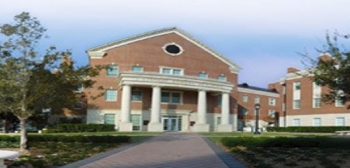密歇根大学
About
One of the foremost research universities in the United States, the University of Michigan was founded in 1817, before Michigan had even become a state, and moved from Detroit to what is now its Central campus in Ann Arbor in 1837.
Michigan spans 780 acres, which is made up of its Central and North campuses, two regional campuses, and a center in Detroit. It has a large student body of around 46,000, with undergraduates numbering two-thirds of that number.
Michigan has been lauded for having high standards of research, and the university’s comprehensive graduate program offers doctoral degrees in the humanities, social sciences, and STEM fields (science, technology, engineering and mathematics) as well as professional degrees in architecture, business, medicine, law, pharmacy, nursing, social work, public health, and dentistry.
Michigan's body of living alumni comprises more than a half million people, which is one of the largest alumni bases of any university in the world and a valuable resource for current students when it comes to networking and building industry connections.
Around a quarter of all students are accommodated on campus, with many residence halls serving undergraduates, and family housing which is intended mainly for graduates. There are also off-campus apartments, houses, and co-operatives, which generally house upper division and graduate students, as well as ‘theme communities’ within residence halls, where students can immerse themselves among peers with similar interests.
Michigan has more than 1,000 clubs and societies, including engineering project teams, community service organizations, and charitable projects. The Michigan Marching Band is over 100 years old and has 350 student members, and other noted musical ensembles include the University of Michigan Men’s Glee Club, a men’s chorus with over 100 members.
Michigan has a history of student activism, and there are a number of groups dedicated to various worth causes. Some, such as the United Students Against Sweatshops (USAS), devote themselves to more left-wing causes, in this case holding to account multinational companies that exploit their workers in factories, but there are also conservative groups such as Young Americans for Freedom, as well as non-partisan groups.
Cultural and ethnical student organizations help students forge smaller communities from the large university population, and publications such as the Michigan Daily, published five days a week during the Fall and Winter terms, allow students to keep abreast of the latest news on campus.
About
One of the foremost research universities in the United States, the University of Michigan was founded in 1817, before Michigan had even become a state, and moved from Detroit to what is now its Central campus in Ann Arbor in 1837.
Michigan spans 780 acres, which is made up of its Central and North campuses, two regional campuses, and a center in Detroit. It has a large student body of around 46,000, with undergraduates numbering two-thirds of that number.
Michigan has been lauded for having high standards of research, and the university’s comprehensive graduate program offers doctoral degrees in the humanities, social sciences, and STEM fields (science, technology, engineering and mathematics) as well as professional degrees in architecture, business, medicine, law, pharmacy, nursing, social work, public health, and dentistry.
Michigan's body of living alumni comprises more than a half million people, which is one of the largest alumni bases of any university in the world and a valuable resource for current students when it comes to networking and building industry connections.
Around a quarter of all students are accommodated on campus, with many residence halls serving undergraduates, and family housing which is intended mainly for graduates. There are also off-campus apartments, houses, and co-operatives, which generally house upper division and graduate students, as well as ‘theme communities’ within residence halls, where students can immerse themselves among peers with similar interests.
Michigan has more than 1,000 clubs and societies, including engineering project teams, community service organizations, and charitable projects. The Michigan Marching Band is over 100 years old and has 350 student members, and other noted musical ensembles include the University of Michigan Men’s Glee Club, a men’s chorus with over 100 members.
Michigan has a history of student activism, and there are a number of groups dedicated to various worth causes. Some, such as the United Students Against Sweatshops (USAS), devote themselves to more left-wing causes, in this case holding to account multinational companies that exploit their workers in factories, but there are also conservative groups such as Young Americans for Freedom, as well as non-partisan groups.
Cultural and ethnical student organizations help students forge smaller communities from the large university population, and publications such as the Michigan Daily, published five days a week during the Fall and Winter terms, allow students to keep abreast of the latest news on campus.
University highlights
- 2012#17
- 2014#22
- 2015#23
- 2016#=30
- 2017#23
- 2018#=21
- 2019#20
- 2020#21
- 2021#21
- 2022#=23
- 2023#25
- 2024#33
- 2025#44
- 2026#45
Campus locations
Ann Arbor, US,
G-664 Haven Hall, 505 South State Street , Ann Arbor , Michigan , United States , 48109-1045
Dearborn Campus,
4901 Evergreen Road , Dearborn , Michigan , United States , 48128
Flint Campus,
303 East Kearsley Street , Flint , Michigan , United States , 48502
Similar Universities
罗切斯特理工学院 (RIT)
Lomb Memorial Drive, Rochester
波士顿大学Questrom商学院
595 Commonwealth Avenue, Boston
马里兰州立大学艺术学院
1300 W. Mount Royal Avenue, Baltimore
Lyle School of Engineering
6425 Boaz Lane, Dallas
哈斯商学院,加州大学伯克利分校
Haas School of Business, Berkeley
福克斯商学院,天普大学
Alter Hall, Philadelphia
埃默里大学罗林斯公共卫生学院
1518 Clifton Road, Atlanta





















